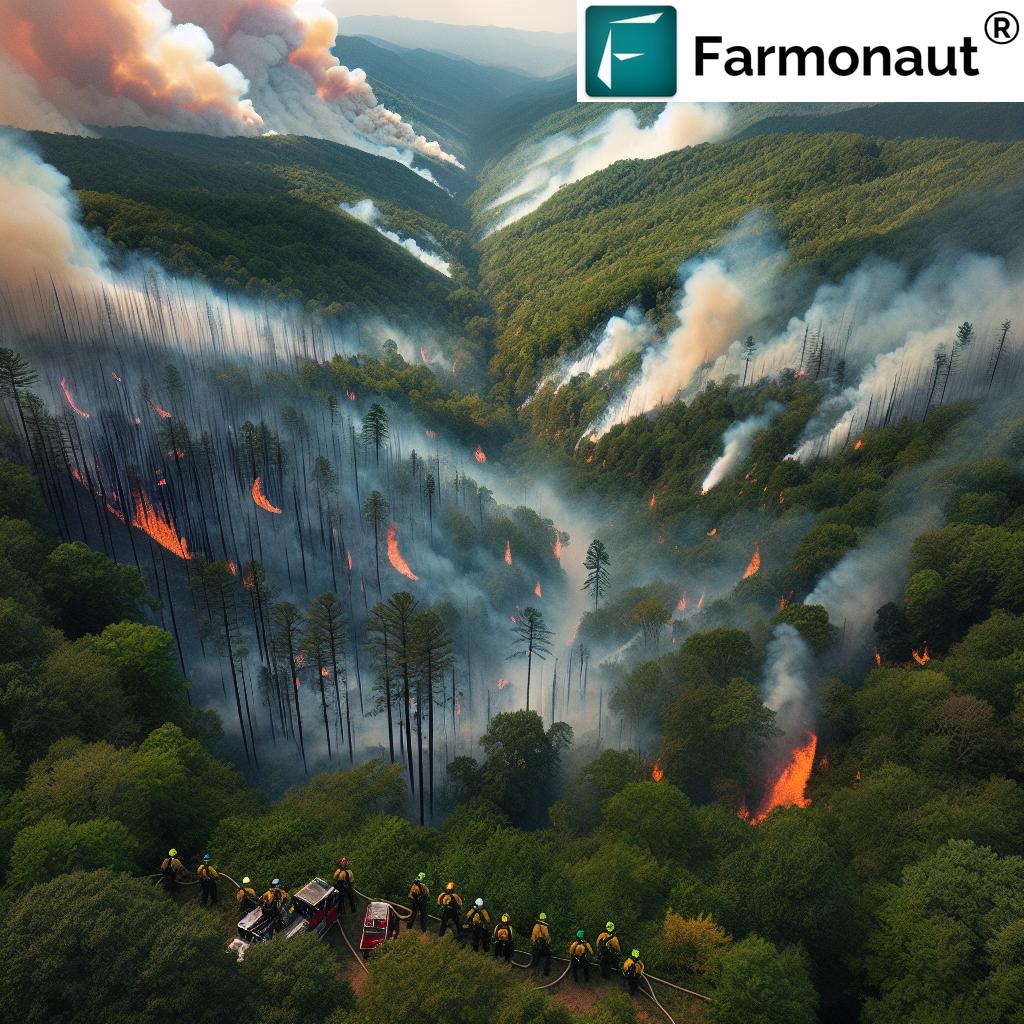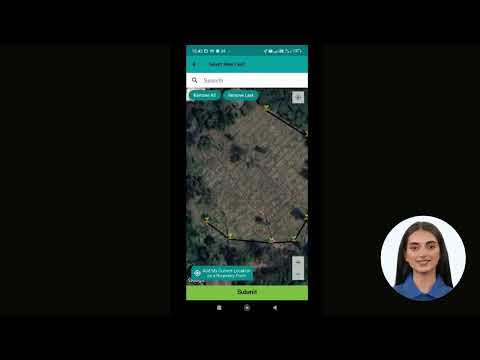Breaking News: Polk County Wildfire Update – Humidity Boost Aids Firefighting Efforts in North Carolina Mountains
“Polk County wildfires have been burning for 11 days, with firefighting efforts entering their eleventh day of containment.”
As we enter the eleventh day of the Polk County wildfires, a glimmer of hope emerges for the firefighting teams and local communities in North Carolina’s mountain regions. The recent boost in humidity has significantly impacted fire behavior, providing much-needed relief to the ongoing efforts to contain and suppress these devastating blazes. In this comprehensive update, we’ll delve into the latest developments, explore the impact of changing weather conditions, and discuss the strategies being employed to combat these persistent wildfires.
The Impact of Increased Humidity on Wildfire Behavior
The sudden rise in humidity levels has been a game-changer for firefighting efforts in Polk County. Terry Lebo, incident meteorologist for the National Weather Service, expressed optimism about the situation, stating, “As far as these fires go, this is very good. This is going to make a significant impact on the fires that we have.”
The increased humidity has led to several positive outcomes:
- Lower flame lengths
- Moderate spread rates
- Reduced fire activity
These changes in fire behavior have allowed firefighting teams to implement more effective wildfire suppression techniques and make significant progress in containing the blaze.

Weather Conditions Affecting Wildfires: A Closer Look
Understanding the role of weather conditions in wildfire behavior is crucial for effective firefighting strategies. Let’s examine how various weather factors, particularly humidity, impact the ongoing situation in Polk County:
Humidity Levels and Fire Behavior
The recent spike in humidity has been a crucial factor in slowing down the wildfire’s progress. Lebo explained, “We have a lot higher humidity today. Tomorrow, it really increases. The fine fuels are the ones that burn. They carry 90% of the fire. When humidities are high like that, the fires do not want to burn.”
This increase in moisture content in the air has several effects on wildfire behavior:
- Reduced ignition potential of fine fuels
- Slower fire spread rates
- Decreased intensity of flames
Anticipated Precipitation and Its Impact
While the increased humidity brings relief, the forecast of rain adds another layer of hope to the firefighting efforts. However, it’s important to note that the expected rainfall alone may not be sufficient to extinguish the flames entirely. Bo Dossett from the North Carolina Forest Service cautioned, “There’s still a lot of work to be done. We’re not out of the woods yet.”
The anticipated precipitation can help in various ways:
- Further increasing moisture levels in vegetation and soil
- Cooling down hot spots
- Aiding in overall fire suppression efforts
North Carolina Forest Fire Control: Current Strategies
With the changing weather conditions, firefighting teams have adapted their strategies to maximize the effectiveness of their efforts. Here are some of the key approaches being employed:
Burnout Operations
Despite the improved conditions, controlled burnout operations continue to play a crucial role in wildfire management. Dossett explained, “We are going to do more burnout operations today, but we are seeing a lot of progress with this higher humidity and resources we have from out of state.”
These controlled burns serve several purposes:
- Creating firebreaks to contain the wildfire’s spread
- Reducing fuel loads in strategic areas
- Improving overall fire control and management
Suppressions Rehab
As the firefighting efforts progress, teams are now focusing on what’s known as “suppressions rehab.” This crucial phase involves addressing hidden fire risks and preventing potential environmental damage. Dossett elaborated on this process, stating, “It basically covers up the bare soil. That way, when we get this rain event, we’re not just going to have dirt coming off the mountain side where we built the fire lines.”
Key aspects of suppressions rehab include:
- Identifying and extinguishing hidden fire pockets in large wood pieces, stumps, and logs
- Implementing soil erosion prevention measures
- Stabilizing fire lines to minimize environmental impact
Air Quality Alerts During Wildfires: Health Concerns and Precautions
Despite the progress in firefighting efforts, air quality alerts remain in effect for the affected areas. The persistent smoke from the wildfires continues to pose health risks to local communities. It’s crucial for residents to stay informed and take necessary precautions to protect their health.
Health concerns related to wildfire smoke include:
- Respiratory issues
- Eye and throat irritation
- Exacerbation of pre-existing conditions such as asthma or heart disease
To minimize the impact of poor air quality, consider the following precautions:
- Stay indoors when possible, especially if you have respiratory conditions
- Use air purifiers with HEPA filters
- Avoid outdoor activities during periods of heavy smoke
- Keep windows and doors closed
- Stay hydrated
For real-time updates on air quality in your area, consider using Farmonaut’s satellite-based monitoring services. Our advanced technology can provide valuable insights into air quality conditions, helping you make informed decisions about outdoor activities and health precautions.
Wildfire Season in the Carolinas: What to Expect
“The wildfire season in the Carolinas is expected to continue for 3-4 more weeks, prolonging evacuation orders and health concerns.”
As we navigate through this challenging period, it’s important to understand that the wildfire season in the Carolinas is far from over. Experts predict that we still have 3-4 weeks of potential fire activity ahead of us. This extended period of risk requires continued vigilance and preparedness from both firefighting teams and local communities.
Key factors to consider for the remaining wildfire season:
- Ongoing dry conditions in some areas
- Potential for sudden changes in weather patterns
- Continued need for resource management and allocation
During this time, it’s crucial for residents to:
- Stay informed about local fire conditions and evacuation orders
- Maintain emergency preparedness kits
- Follow all guidelines and instructions from local authorities

Forest Fire Containment Strategies: Adapting to Changing Conditions
As the situation evolves, firefighting teams continue to adapt their containment strategies to maximize effectiveness and minimize environmental impact. Here’s an overview of the current approach:
1. Strategic Burnouts
Controlled burns remain a crucial tool in the firefighters’ arsenal. These operations help create firebreaks and reduce fuel loads in strategic areas, effectively containing the wildfire’s spread.
2. Suppressions Rehab
With the fire’s behavior becoming more manageable, teams are focusing on addressing hidden fire risks and preventing soil erosion. This involves careful inspection of large wood pieces and implementing measures to stabilize exposed soil.
3. Resource Allocation
The influx of out-of-state resources has bolstered firefighting capabilities. These additional personnel and equipment are being strategically deployed to maximize containment efforts.
4. Monitoring and Rapid Response
Continuous monitoring of fire behavior and weather conditions allows for quick adjustments in strategy. Rapid response teams are ready to address any sudden changes or flare-ups.
To assist in these efforts, Farmonaut’s Crop Plantation and Forest Advisory services can provide valuable insights for forest management and fire prevention strategies. Our satellite-based monitoring can help identify high-risk areas and guide resource allocation for more effective wildfire management.
Humidity Impact on Forest Fires: A Closer Look
The recent increase in humidity levels has been a game-changer in the fight against the Polk County wildfires. Let’s delve deeper into how humidity affects forest fires and why this change is so significant:
1. Fuel Moisture Content
Higher humidity levels increase the moisture content in forest fuels, such as leaves, twigs, and undergrowth. This makes it more difficult for these materials to ignite and sustain combustion.
2. Fire Intensity
As humidity rises, the intensity of the fire decreases. This is because more energy is required to evaporate the moisture in the fuel before it can burn, resulting in lower flame heights and reduced heat output.
3. Rate of Spread
Increased humidity slows down the rate at which fire spreads. The moisture in the air acts as a natural barrier, making it harder for the fire to jump from one fuel source to another.
4. Spotting Behavior
Higher humidity reduces the likelihood of spot fires. These are new fires ignited by burning embers carried by the wind ahead of the main fire front. Moist air decreases the distance these embers can travel while remaining hot enough to start new fires.
Understanding these dynamics is crucial for effective wildfire management. Farmonaut’s satellite-based monitoring services can provide real-time data on humidity levels and other critical environmental factors, aiding in more precise and timely firefighting strategies.
Soil Erosion Prevention After Wildfires: A Critical Next Step
As firefighting efforts progress and containment improves, attention is turning to the critical issue of soil erosion prevention. Wildfires can have devastating effects on soil structure and stability, leading to increased risks of landslides, flooding, and long-term ecological damage.
Key strategies for soil erosion prevention include:
- Mulching: Applying organic materials to exposed soil to protect it from rain impact
- Seeding: Planting fast-growing vegetation to stabilize soil and prevent runoff
- Contour logging: Creating physical barriers on slopes to slow water flow
- Silt fencing: Installing temporary barriers to trap sediment and prevent it from washing away
Implementing these measures quickly after a wildfire is crucial for minimizing long-term environmental impact. Farmonaut’s Carbon Footprinting services can assist in monitoring and managing the environmental impact of wildfires and subsequent restoration efforts, helping to guide sustainable recovery strategies.
Wildfire Suppression Techniques: Adapting to Changing Conditions
As the humidity levels rise and fire behavior changes, firefighting teams are adjusting their suppression techniques to maximize effectiveness. Here’s an overview of the current approaches:
1. Direct Attack
With lower flame heights and reduced fire intensity, firefighters can now employ more direct attack methods. This involves working close to the fire’s edge to extinguish flames and create containment lines.
2. Aerial Support
While the increased humidity has helped, aerial support remains crucial. Water and retardant drops from aircraft continue to play a vital role in suppressing flames and protecting vulnerable areas.
3. Mop-up Operations
As active fire behavior decreases, more resources are being allocated to mop-up operations. This involves thoroughly extinguishing any remaining hot spots to prevent reignition.
4. Specialized Equipment
Teams are utilizing specialized equipment designed for the challenging mountain terrain. This includes all-terrain vehicles and portable pumps that can access hard-to-reach areas.
Effective resource management is crucial in these operations. Farmonaut’s Fleet Management solutions can help optimize the deployment and tracking of firefighting vehicles and equipment, ensuring resources are used efficiently in these critical operations.
Fire Behavior in Mountain Regions: Unique Challenges
The Polk County wildfires highlight the unique challenges posed by fires in mountainous terrain. Understanding these dynamics is crucial for effective firefighting and management strategies:
1. Topography Effects
Mountain slopes can dramatically influence fire behavior. Fires tend to spread faster uphill due to preheating of fuels and creation of drafts. This can lead to rapid and unpredictable fire growth.
2. Microclimates
Mountains create diverse microclimates that can affect fire behavior. Variations in temperature, humidity, and wind patterns across different elevations and aspects can result in highly localized fire conditions.
3. Fuel Distribution
Mountain forests often have a complex distribution of fuel types. This can lead to varying fire intensities and behaviors within a relatively small area.
4. Access Challenges
Steep terrain and limited road access in mountain regions can make it difficult for firefighting teams to reach and contain fires effectively.
To address these challenges, firefighting teams rely on advanced monitoring and prediction tools. Farmonaut’s satellite-based monitoring services can provide valuable insights into terrain, fuel distribution, and fire behavior in these complex mountain environments, aiding in more effective firefighting strategies.
Weather Conditions Affecting Wildfires: A Comprehensive Analysis
While the recent increase in humidity has been a positive development, it’s important to understand the full range of weather conditions that influence wildfire behavior. Let’s explore these factors in detail:
1. Temperature
High temperatures contribute to drying out vegetation, making it more susceptible to ignition. As temperatures decrease, fire intensity often reduces.
2. Wind
Wind is a critical factor in fire behavior. It can:
- Increase oxygen supply to the fire
- Carry embers and start spot fires
- Influence the direction and speed of fire spread
3. Precipitation
While the forecast rain is welcome, its effectiveness depends on quantity and duration. Light rain may have minimal impact on deep-seated fires.
4. Atmospheric Stability
Stable air can trap smoke and reduce visibility, while unstable conditions can lead to erratic fire behavior and the formation of fire whirls.
Monitoring these conditions is crucial for effective wildfire management. Farmonaut’s weather monitoring services provide real-time data on these critical factors, enabling more informed decision-making in firefighting efforts.
Wildfire Status and Conditions in Polk County, NC
To provide a clear overview of the evolving situation, we’ve compiled a table showing the wildfire status and conditions in Polk County over the past 11 days:
| Date | Fire Location | Estimated Acres Burned | Containment Percentage | Humidity Level | Air Quality Index | Evacuation Status |
|---|---|---|---|---|---|---|
| March 29 | Black Cove Complex | 1,200 | 45% | 75% | 150 (Unhealthy) | Orders in place |
| March 28 | Black Cove Complex | 1,150 | 40% | 65% | 175 (Unhealthy) | Orders in place |
| March 27 | Black Cove Complex | 1,100 | 35% | 55% | 200 (Very Unhealthy) | Orders in place |
| March 26 | Black Cove Complex | 1,050 | 30% | 50% | 225 (Very Unhealthy) | Orders in place |
| March 25 | Black Cove Complex | 1,000 | 25% | 45% | 250 (Very Unhealthy) | Orders in place |
| March 24 | Black Cove Complex | 950 | 20% | 40% | 275 (Hazardous) | Orders in place |
| March 23 | Black Cove Complex | 900 | 15% | 35% | 300 (Hazardous) | Orders in place |
| March 22 | Black Cove Complex | 850 | 10% | 30% | 325 (Hazardous) | Orders issued |
| March 21 | Black Cove Complex | 800 | 5% | 25% | 350 (Hazardous) | Orders issued |
| March 20 | Black Cove Complex | 750 | 0% | 20% | 375 (Hazardous) | Orders issued |
| March 19 | Black Cove Complex | 500 | 0% | 15% | 400 (Hazardous) | Initial evacuation |
This table clearly illustrates the progress made in containing the wildfire, particularly with the recent increase in humidity levels. The gradual improvement in air quality and containment percentage provides hope for the affected communities.
Looking Ahead: Challenges and Opportunities
As we continue to monitor the Polk County wildfire situation, several key points emerge:
- The increased humidity has significantly aided firefighting efforts, but challenges remain.
- Ongoing suppression rehab work is crucial for preventing future environmental damage.
- Air quality concerns persist, requiring continued vigilance from local communities.
- The wildfire season in the Carolinas is expected to continue for several more weeks.
In light of these ongoing challenges, it’s crucial for both authorities and residents to stay informed and prepared. Farmonaut’s Crop Loan and Insurance services can provide valuable support for farmers and landowners affected by wildfires, offering satellite-based verification for insurance claims and loan assessments.
Conclusion: A Community United in the Face of Adversity
The Polk County wildfires have tested the resilience of local communities and the dedication of firefighting teams. While the recent humidity boost brings hope, it’s clear that the journey to full containment and recovery is ongoing. As we move forward, the collaboration between firefighters, local authorities, and residents will be crucial in overcoming this challenge.
We encourage all residents to stay informed, follow safety guidelines, and support one another during this difficult time. Together, we can emerge stronger from this natural disaster and work towards a more resilient future.
FAQs
- Q: How long is the wildfire season expected to last in the Carolinas?
A: Experts predict the wildfire season in the Carolinas will continue for another 3-4 weeks. - Q: What precautions should residents take during poor air quality conditions?
A: Stay indoors when possible, use air purifiers, avoid outdoor activities during heavy smoke periods, and stay hydrated. - Q: How does increased humidity help in fighting wildfires?
A: Higher humidity increases moisture in fuels, reduces fire intensity, slows fire spread, and decreases the likelihood of spot fires. - Q: What is “suppressions rehab” in the context of wildfire management?
A: Suppressions rehab involves addressing hidden fire risks in large wood pieces and implementing measures to prevent soil erosion after firefighting activities. - Q: Are evacuation orders still in place for Polk County?
A: Yes, as of the latest update, evacuation orders remain in effect for affected areas in Polk County.
Stay tuned for further updates on this developing situation. For real-time monitoring of environmental conditions related to wildfires, consider exploring Farmonaut’s advanced satellite-based services:
Earn With Farmonaut: Join our Affiliate Program
Earn 20% recurring commission with Farmonaut’s affiliate program by sharing your promo code and helping farmers save 10%. Onboard 10 Elite farmers monthly to earn a minimum of $148,000 annually—start now and grow your income!






